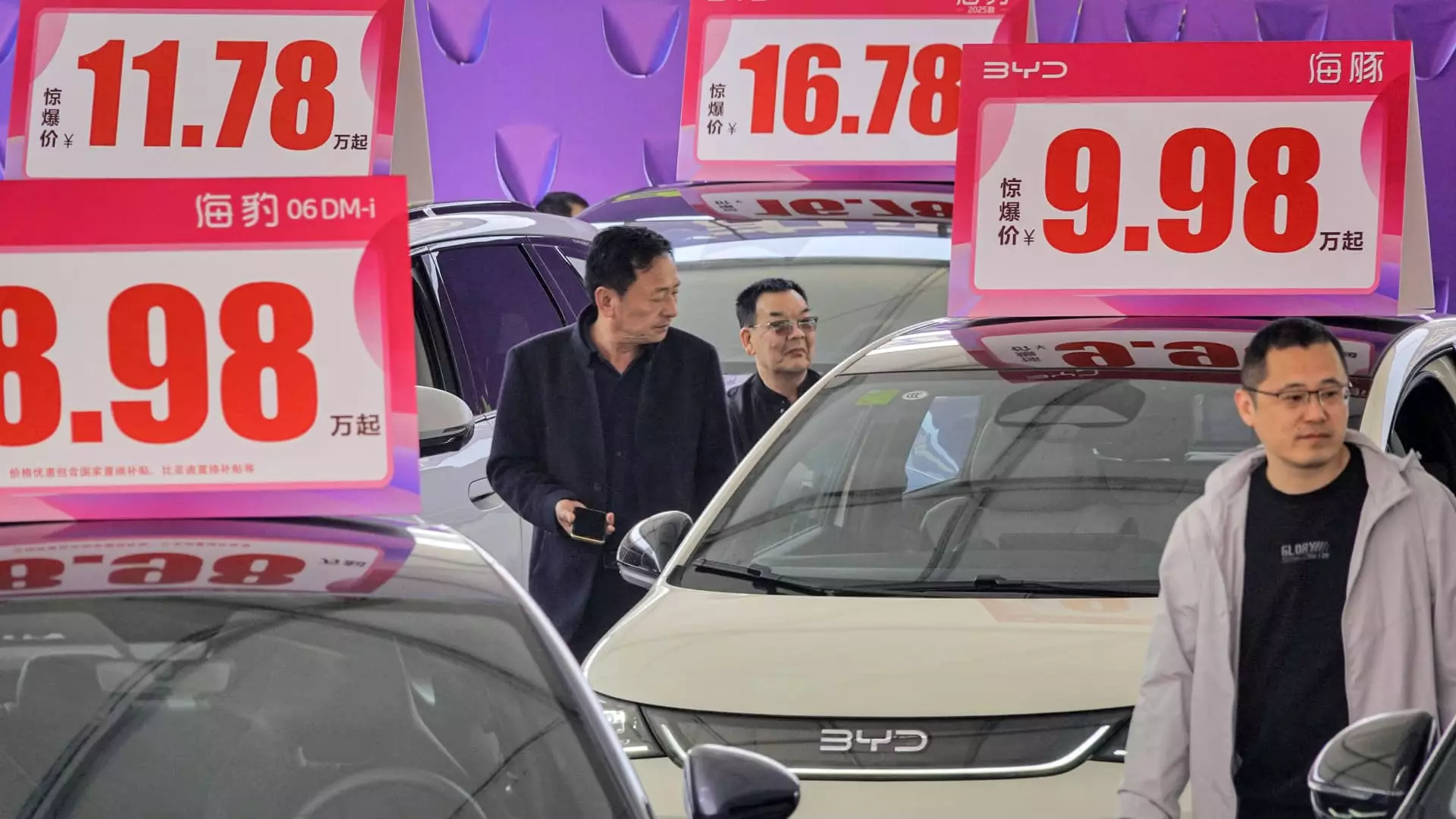The electric vehicle (EV) market in China is undergoing a seismic shift, fueled by aggressive price wars that threaten to reshape not only the domestic automotive landscape but also the broader global automotive market. BYD, a titan in the arena, has initiated a wave of price cuts that sees some of its lower-end models discounted by nearly 30%. Among these, the compact Seagull now has an enticing price tag of 55,800 yuan (approximately $7,750), igniting a competitive frenzy where rival automotive companies are scrambling to keep pace. Analysts, such as Zhong Shi from the China Automobile Dealers Association, describe this moment as a period of shock and anxiety, where smaller manufacturers find themselves caught in a tide they struggle to navigate.
This concerted effort to cut prices occurs against the backdrop of a Chinese economy grappling with slower growth and dwindling consumer demand. In a bold attempt to stimulate economic activity, the government has introduced subsidies for new energy vehicles (NEVs), further intensifying competition in an already fraught environment. Morgan Stanley’s Chief China Economist, Robin Xing, underscores the paradoxical nature of this landscape: while there is a push towards a consumption-driven economy, the current realities reflect a stubborn reliance on a supply-driven model, suggesting the elusive nature of true reflation.
Historical Context: Echoes of Past Bubbles
The backdrop of this automotive revolution is reminiscent of the real estate bubble in China, with industry figures like Great Wall Motors Chairman, Wei Jianjun, referencing past crises to illuminate the present risks. The reference to “Evergrande” speaks volumes about the potential pitfalls facing the rapidly expanding EV sector, which, like real estate in previous years, could be prone to overheating. As state-backed initiatives have fostered an environment ripe for growth, it has become increasingly apparent that the sustainability of such rapid expansion is questionable. Consumers have begun to weigh their options, and the air is thick with anxiety as major players tread a fine line between stimulating demand and inciting a market collapse.
Against this backdrop, BYD finds itself in a peculiar position. Despite a staggering 49% increase in net profit to 14.17 billion yuan, concerns have arisen about the company’s financial practices, including disputes about the pressure placed on dealers regarding cash flow. Such controversies only add to the scrutiny faced by China’s automotive industry, where a growth narrative is increasingly framed alongside warnings of potential pitfalls.
Price Cuts and Consumer Behavior
What stands out in this price-cutting frenzy is the staggering contrast between the Chinese automotive market and its Western counterparts. The average retail price for cars in China has plummeted nearly 19% over the past two years, reaching around 165,000 yuan ($22,900), while the equivalent figure in the U.S. has actually risen, with new car prices averaging $48,699. This price disparity further deepens the competitive divide as Chinese automakers look to capitalize on the rapidly changing preferences of consumers seeking affordability in the face of economic uncertainty.
Moreover, a significant portion of the industry’s price adjustments has centered around hybrid vehicles, where prices have been slashed by 27%. This tactic represents more than just a means to attract buyers; it is a strategic maneuver demonstrating an understanding of consumer psychology. As stakeholders grapple with a cost-sensitive market, innovative approaches—such as offering advanced driver-assist technologies as standard—could prove to be essential differentiators in a crowded field.
Global Ramifications and Trade Dynamics
China’s expansive push into the EV sector has not gone unnoticed internationally. The European Union and the United States, wary of the impact of Chinese government subsidies, have instituted tariffs on imports of China-made electric vehicles. Such protective measures signal a growing apprehension about the potential disruption to local industries, echoing long-standing fears about globalization and competition. In a battleground marked by policy and market forces, BYD’s impressive sales achievements in Europe, where it recently outsold Tesla for the first time, illustrate just how profound the implications of this price war may be.
Industry experts assert that the strategy from Chinese automakers hinges not only on aggressive pricing but also on the ability to adapt their offerings to meet consumer needs, regardless of geographic boundaries. China’s automakers are poised to continue leveraging their low-cost structures to penetrate new markets, a move that inevitably sparks concerns among global competitors.
In a climate rife with rapid advancements and shifting market dynamics, the automotive sector stands at a crossroads. How players choose to navigate this intricate landscape—balancing price, quality, innovation, and consumer perception—will ultimately determine the trajectory of not just the Chinese market but also the global automotive industry as a whole. The ongoing competition may redefine the rules of engagement, compelling automakers to rethink their strategies within an ever-evolving marketplace.

